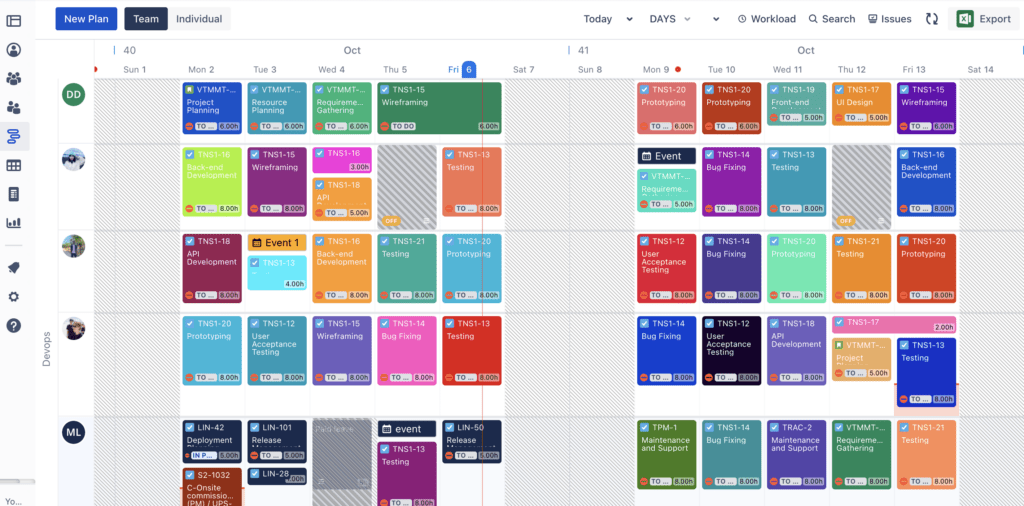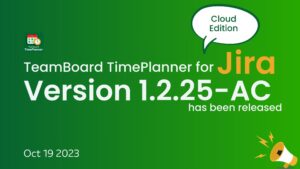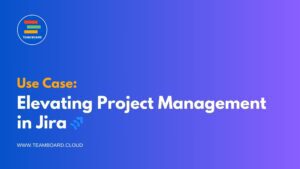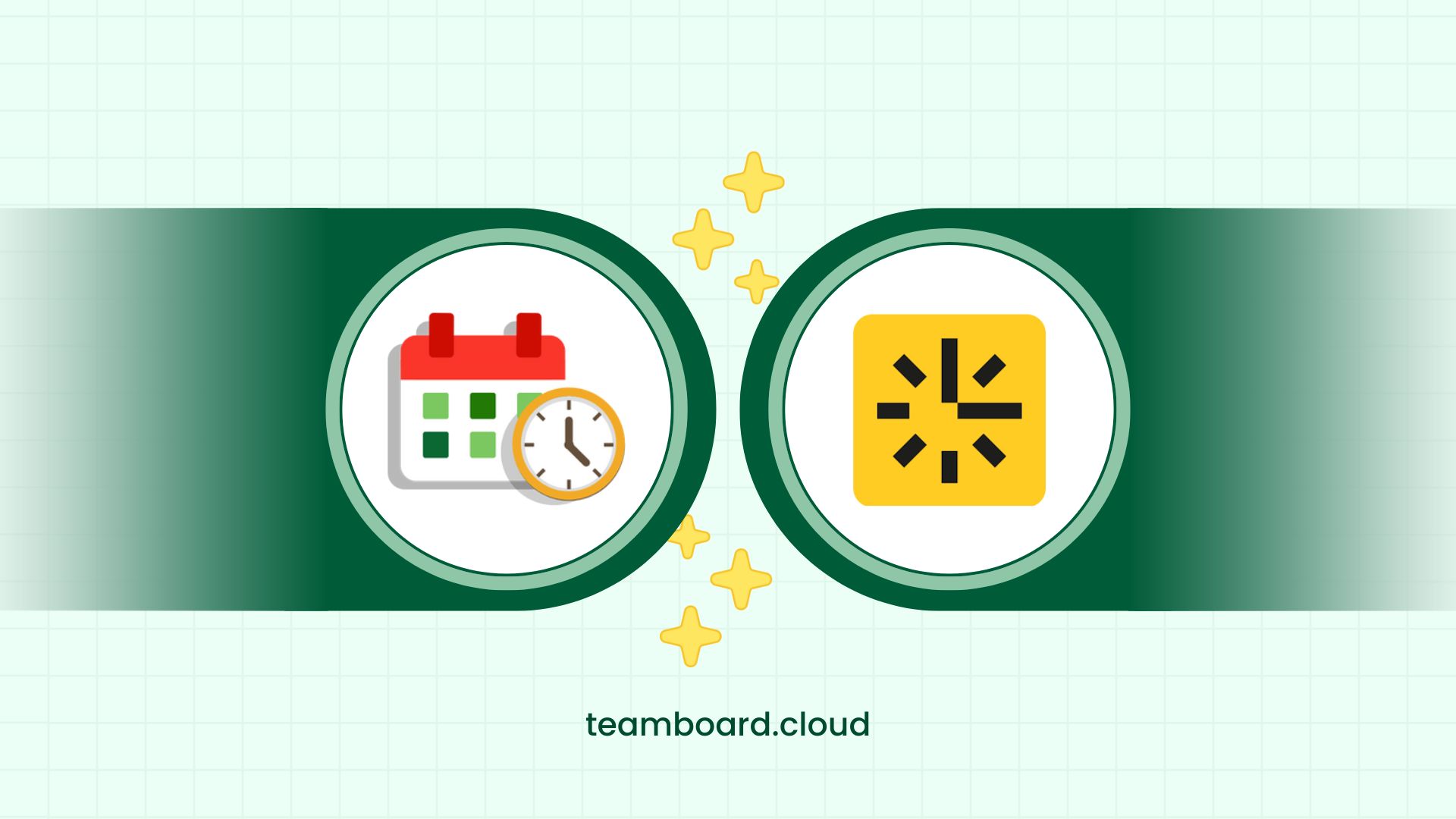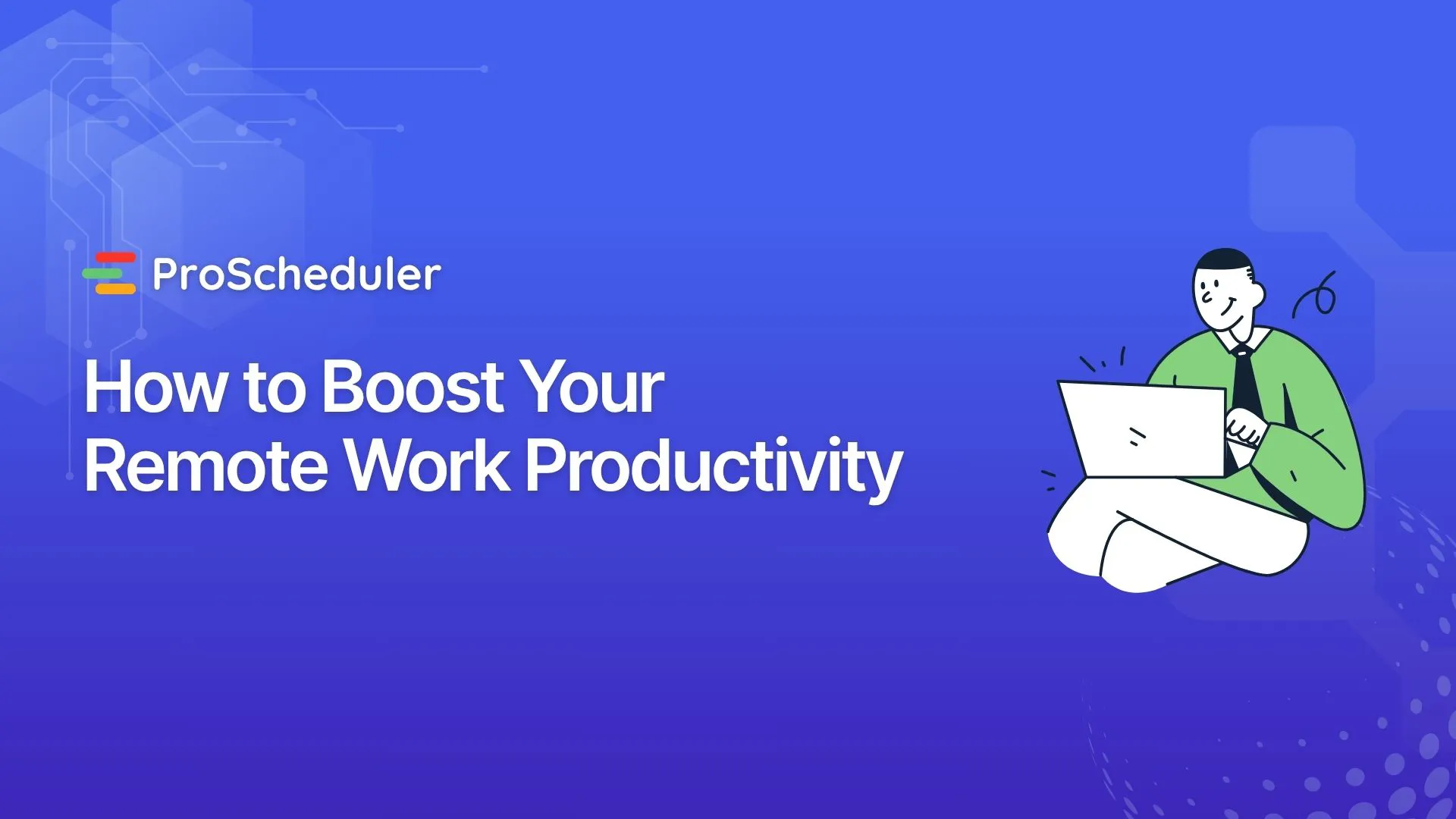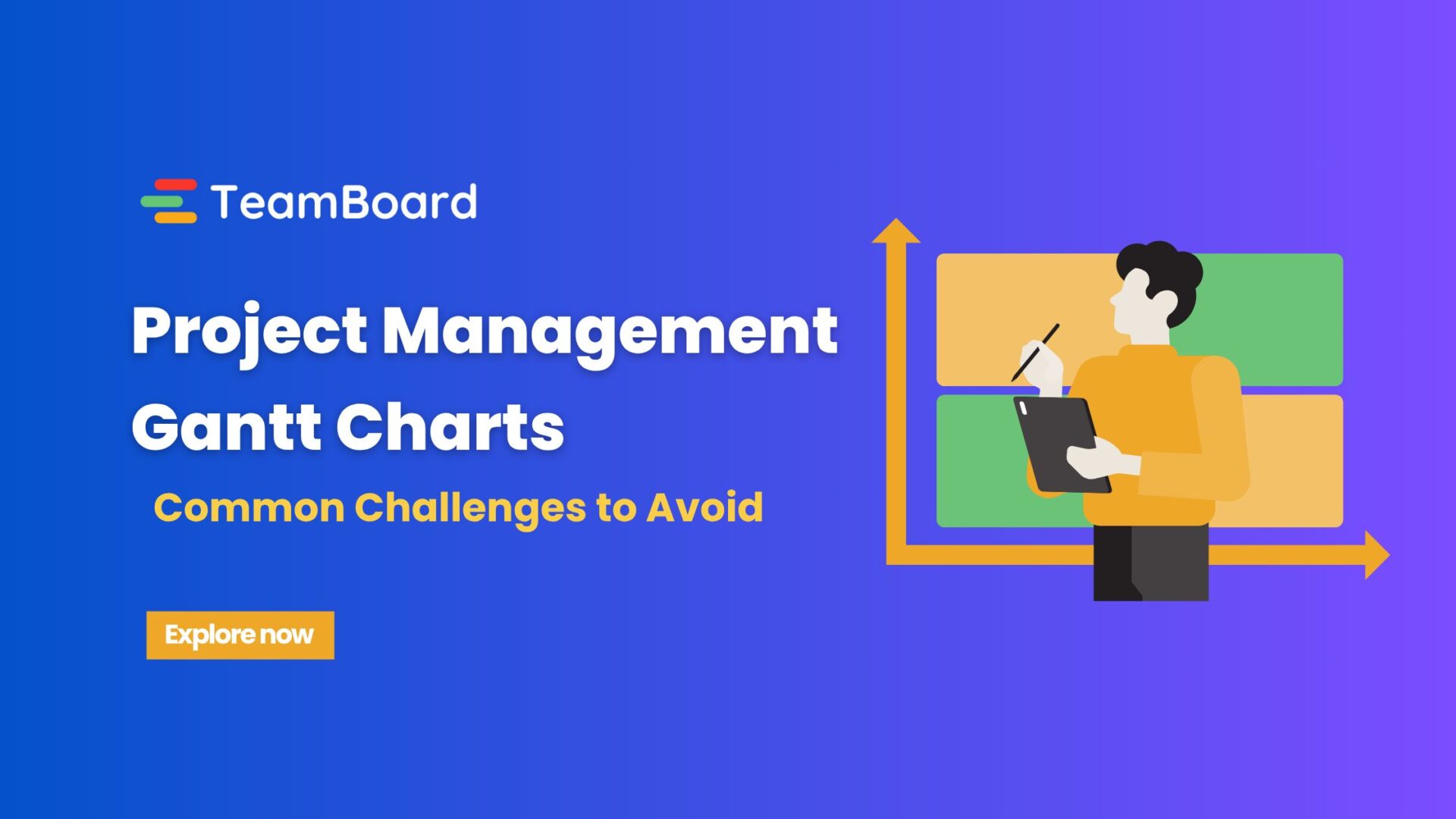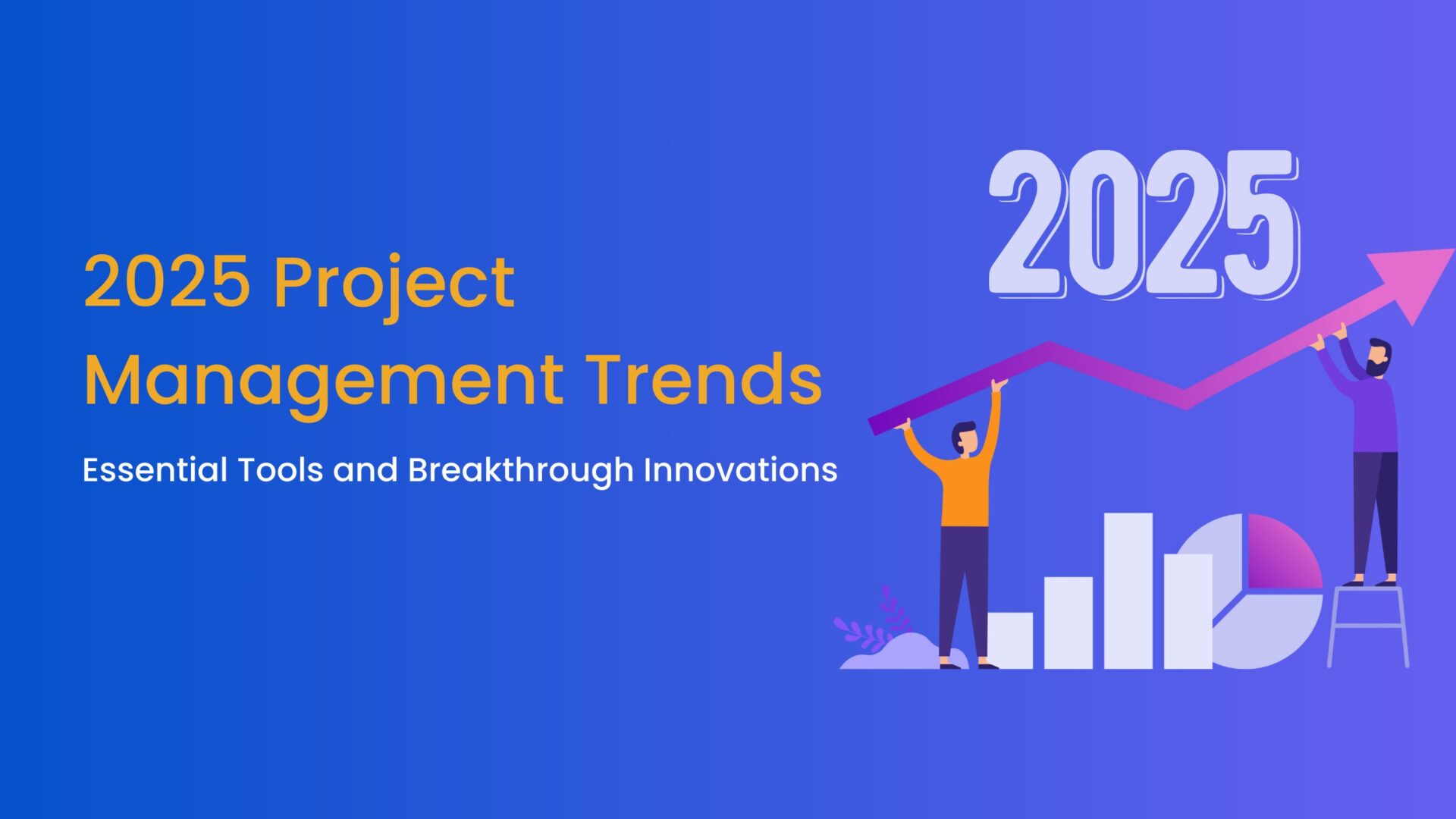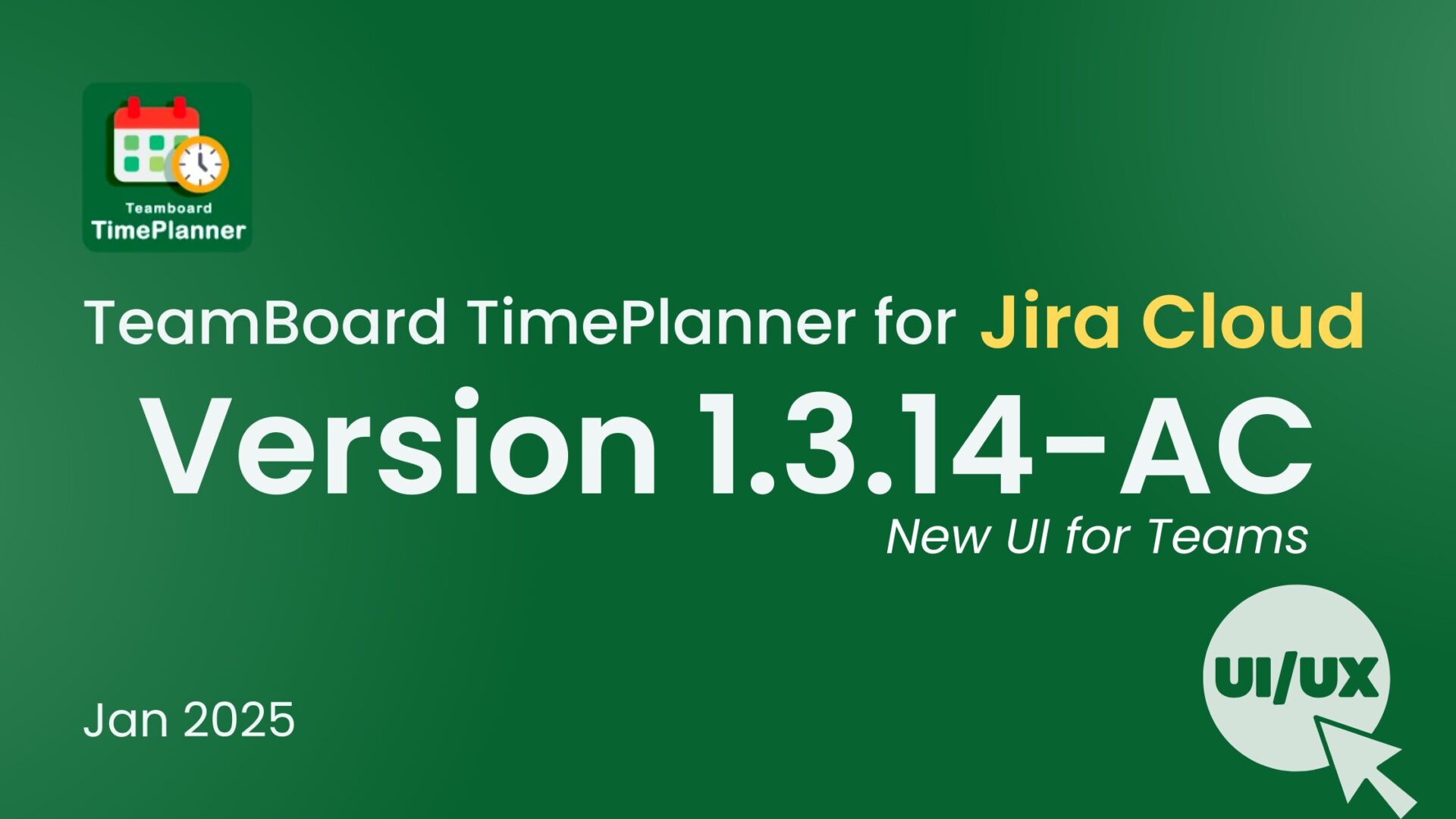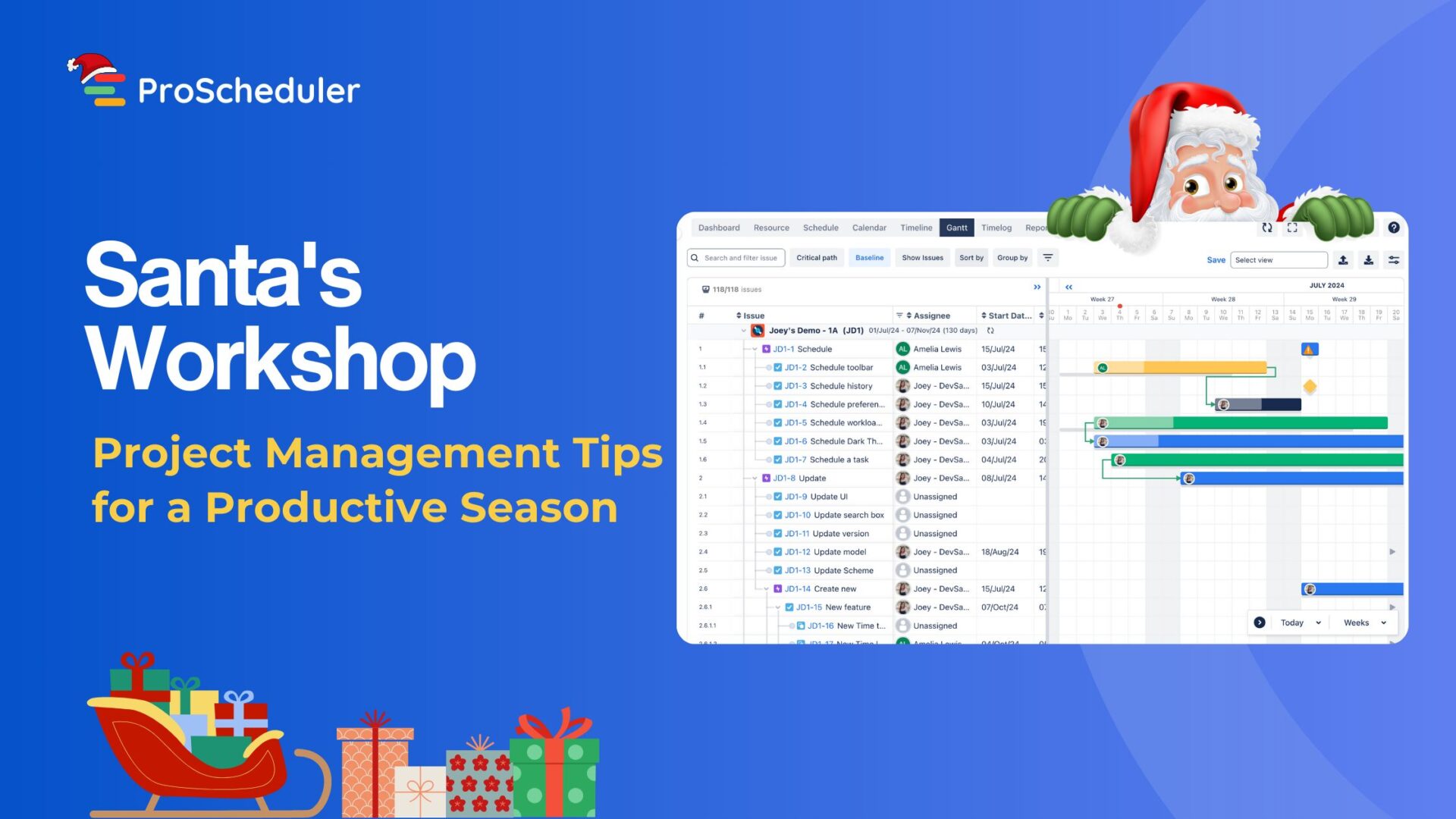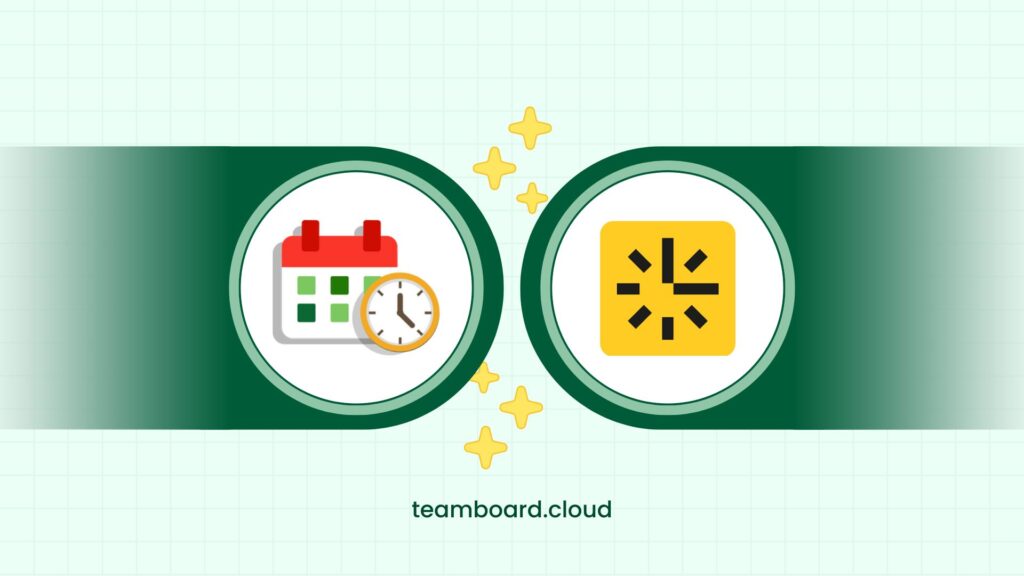Time tracking isn’t just about counting hours; it’s about deciphering productivity, streamlining operations, and foreseeing potential roadblocks. This blog will dive deep into the world of time tracking in Jira, shedding light on how the TeamBoard TimePlanner can be the productivity catalyst your team didn’t know it needed. Whether you’re a seasoned Jira user or a newcomer eager to harness the full spectrum of its capabilities, journey with us to discover how to make every moment count.
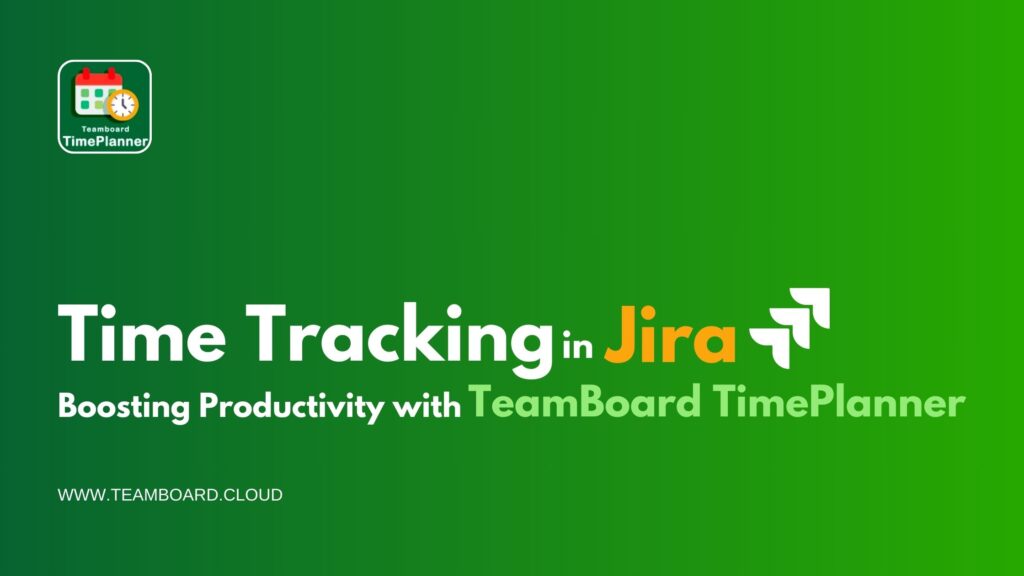
The Need for Time Tracking in Project Management
Every project, regardless of its nature or industry, operates within the constraints of time. Understanding its allocation, usage, and efficiency is paramount. Here’s why:
1. Unearthing Productivity Insights
At its core, time tracking is a mirror that reflects the productivity of a team or an individual. It helps in pinpointing the high-efficiency hours and identifying potential bottlenecks. By analyzing how time is spent, teams can adapt, streamline processes, and subsequently optimize productivity.
2. Real-time Project Health Analysis:
A project that’s lagging behind its scheduled timelines can often hint at deeper issues—be it resource constraints, miscommunication, or unplanned obstacles. Regular time tracking provides an ongoing pulse check, ensuring that projects remain on track and any deviations are promptly addressed.
3. Predicting and Mitigating Project Outcomes
With consistent time tracking, historical data becomes a powerful forecasting tool. Teams can predict project outcomes based on past performances. This proactive approach allows for better risk management, as potential challenges can be foreseen and strategies can be adjusted accordingly.
4. Budgeting and Financial Control
Time equates to cost. Especially in projects where billing is done on an hourly basis or where resources have fixed costs, tracking time can directly influence financial outcomes. It ensures that projects remain within budget, and any financial deviations can be quickly spotted and rectified.
5. Enhancing Client and Stakeholder Trust
Transparency fosters trust. When clients and stakeholders have visibility into how time is being spent on their projects, it builds confidence. It ensures them that their investment is being utilized efficiently and also facilitates open communication regarding project progress.
6. Employee Well-being and Work-life Balance
Contrary to the misconception, time tracking is not about policing employees but about understanding their work patterns. It can highlight potential burnout situations, prolonged work hours, or inefficiencies that might be affecting their work-life balance. Armed with this data, management can take steps to ensure a healthier and more balanced work environment.
Jira’s Basic Time Tracking
Let’s delve into what Jira’s basic time tracking brings to the table:
1. Log Work Feature:
At its core, Jira allows users to log the time they’ve spent on a particular task or issue. This can be as detailed as specifying the exact minutes or hours. Over time, this cumulative data provides a clear picture of the effort invested in individual tasks.
2. Time Fields:
Jira equips users with three primary time-related fields:
- Original Estimate: This is where teams can input the initial estimated time they believe a task will take.
- Time Spent: As the name suggests, this field captures the actual time invested in the task.
- Time Remaining: Based on the original estimate and the time already spent, this field gives a projection of the time left to complete the task.
![]()
3. Visual Timelines:
Within the platform, Jira provides a visual representation, often in the form of Gantt charts or calendars, to map out the progression of tasks. This aids in understanding task dependencies and the flow of the project timeline.
4. Configurable Workflows:
The power of Jira’s time tracking is amplified when combined with its configurable workflows. Teams can set up specific triggers or actions based on the time data. For instance, if a task exceeds its estimated time, it can trigger a notification to the project manager.
5. Reporting and Dashboards:
Jira’s basic time tracking seamlessly integrates with its reporting tools. Teams can generate detailed time reports, visualizing effort distribution, time overruns, or even patterns in productivity across different times of the day or week.
6. Integration Capabilities:
While Jira’s built-in time tracking serves as a strong foundation, its true potential is unlocked when integrated with additional plugins and tools (like TeamBoard TimePlanner). These integrations can further enhance and customize time tracking to cater to specific needs.
In essence, Jira’s basic time tracking is a testament to its commitment to providing teams with the tools they need to manage their projects efficiently. Whether used in its foundational form or enhanced with integrations, it’s a tool that’s indispensable in the modern project management landscape.
Introduction to TeamBoard TimePlanner
Let’s embark on an exploration of what TeamBoard TimePlanner is and why it’s making waves in the project management community.
1. Overview of TeamBoard TimePlanner:
What is TeamBoard TimePlanner? At its core, TeamBoard TimePlanner is an advanced time tracking and planning tool, specifically designed to enhance Jira’s native capabilities. It acts as a bridge, addressing gaps and offering features that take time management to the next level.
2. Key Features
Diving deeper into the capabilities of TeamBoard TimePlanner, it’s evident that this tool is designed with both the individual and the team in mind. Its range of features aims to address the multifaceted challenges of time management in project scenarios. Here’s a comprehensive breakdown of its key features:
2.1. Drag-and-Drop Scheduling:
- This intuitive feature allows project managers and team members to effortlessly adjust schedules. Tasks, milestones, and events can be rearranged with a simple drag and drop, ensuring flexibility and adaptability in project timelines.

2.2. Timelog with Calendar & Timer:
- TeamBoard TimePlanner offers a detailed timelog feature integrated with a calendar, allowing users to log hours against specific dates.
- The built-in timer aids in real-time tracking, enabling users to start, pause, or stop the timer as they work on tasks, ensuring accuracy in time logging.
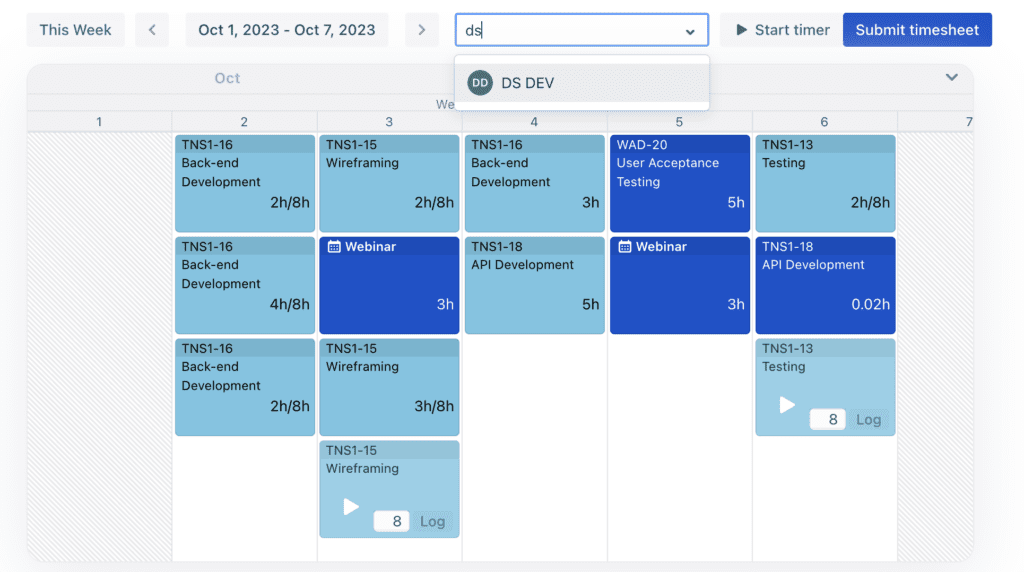
2.3. TimeSheet Capabilities:
- Timesheet Workflow: Streamlines the process of submitting, reviewing, and approving timesheets, ensuring transparency and accountability.
- Team Timesheet: Provides an aggregated view of the entire team’s time logs, aiding in overall project time analysis.
- Resource Timesheet: Focuses on individual resources or assets, giving insights into their time allocation and productivity.
- Timesheet Report: Generates detailed reports based on timesheet data, facilitating in-depth analysis and review.
2.4. Personal Time Tracking:
- Empower individual team members to monitor their own time, promoting self-accountability and helping identify personal productivity patterns.
2.5. Team Time Tracking:
- A consolidated feature that offers a bird’s-eye view of the team’s collective time usage. It helps in identifying bottlenecks, optimizing resource allocation, and ensuring project timelines are met.
2.6. Leave Management:
- Seamlessly manage and track leaves, vacations, or off days for team members. This feature ensures that project schedules factor in absences and plan accordingly.
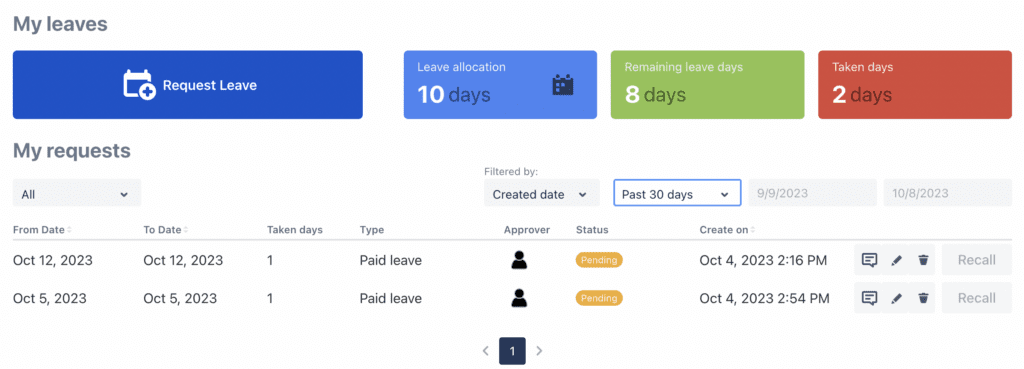
2.7. Advanced Reporting:
- Beyond basic time reports, this feature delves into detailed metrics, offering insights into time distribution, efficiency, resource utilization, and more. These reports are instrumental in strategic decision-making.
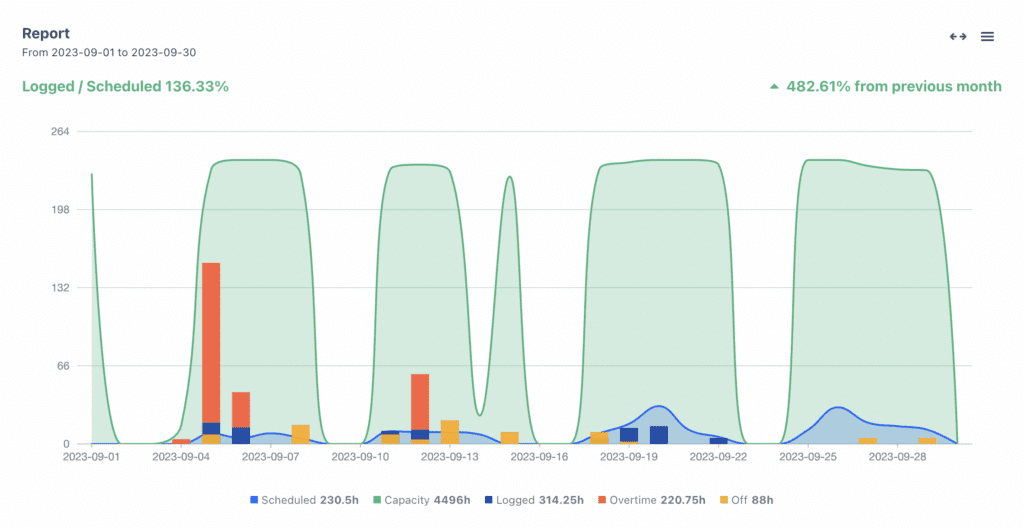
2.8. Cost Management:
- Time is money. TeamBoard TimePlanner integrates time data with cost metrics, allowing teams to monitor project expenses, forecast budgets, and ensure financial efficiency.
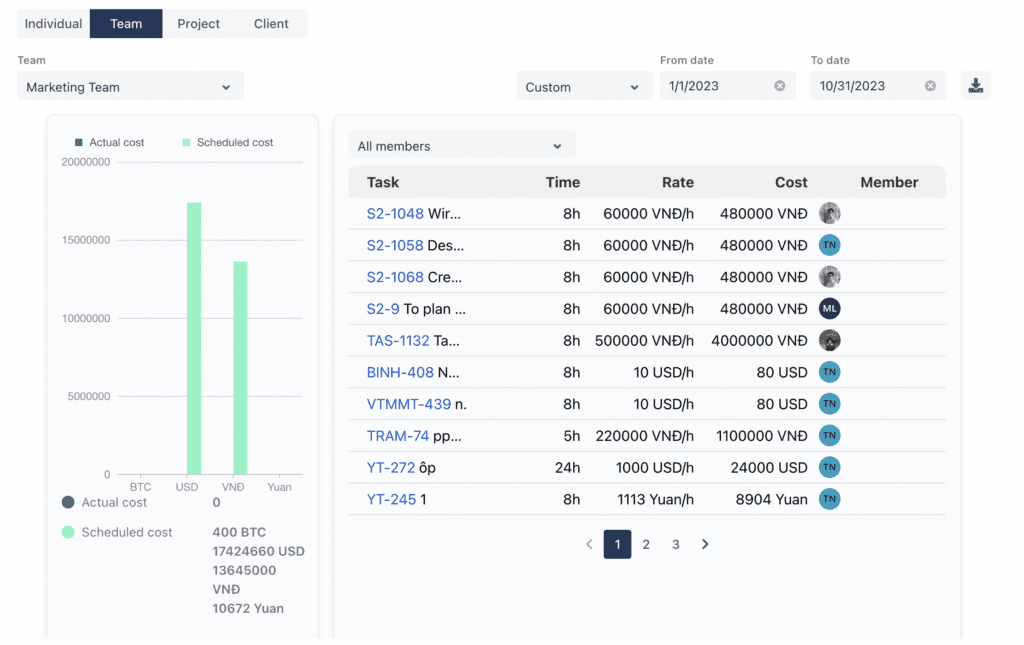
The integration of these features within TeamBoard TimePlanner showcases its holistic approach to time management. Whether you’re an individual contributor aiming to optimize your work hours or a project manager juggling multiple teams and tasks, TeamBoard TimePlanner provides the tools to make every second count.
Use Case: Successful Implementation of TeamBoard TimePlanner
The real-world impact of a tool is best understood through a tangible use case. Let’s explore how a fictitious software development company, ‘Top Squad’, leveraged TeamBoard TimePlanner in their Jira environment to overcome challenges and boost productivity.
Background:
TopSquad, a rapidly growing software development firm, found themselves grappling with the complexities of managing multiple concurrent projects, each with its own set of timelines, deliverables, and resource allocations. Their existing setup with Jira was effective for task management, but they felt the pinch when it came to in-depth time planning and analysis.
The Challenge:
- Inefficient time tracking that led to frequent project overruns.
- A lack of clarity in resource allocation, causing overburdening of some team members.
- Difficulty in providing real-time project status updates to clients due to scattered time data.
- The administrative overhead of manually consolidating timesheets for approvals.
The Solution: Implementing TeamBoard TimePlanner
- Unified Time Management Dashboard: With TeamBoard TimePlanner integrated, TechPioneers had a consolidated view of tasks alongside their time allocations. The unified dashboard became the epicenter of their project management.
- Dynamic Rescheduling: Project managers utilized the drag-and-drop scheduling, adjusting project timelines on-the-fly. This meant faster reaction times to unforeseen changes or challenges.
- Empowered Teams with Personal Time Tracking: Developers and designers began tracking their time, gaining insights into their productivity patterns. This led to optimized work schedules, aligning tasks with individual peak performance times.
- Efficient Resource Allocation: Using the team timesheet and resource timesheet features, project leads had a clear understanding of who was working on what, allowing for balanced task distribution.
- Client Transparency: TechPioneers began sharing detailed time reports with their clients, showcasing effort distribution and progress. This built trust and reduced the back-and-forth communication, as clients had a real-time view of their projects.
- Streamlined Administrative Processes: The timesheet workflow tool meant that timesheets were consolidated, reviewed, and approved faster, reducing administrative bottlenecks.
The Outcome:
- On-time Project Deliveries: With better time planning and resource allocation, project overruns became a rarity.
- Boosted Team Morale: Balanced workloads meant no more burnouts. Teams felt more in control of their tasks and time.
- Enhanced Client Relations: The transparency provided by TeamBoard TimePlanner’s reports solidified TechPioneers’ reputation as a reliable and professional service provider.
- Financial Benefits: Efficient cost management led to better budgeting, forecasting, and financial planning.
For TopSquad, TeamBoard TimePlanner wasn’t just a tool—it was a transformative solution that reshaped their entire project management approach. This use case exemplifies how, with the right tools integrated into Jira, companies can overcome challenges and elevate their productivity.
The essence of effective project management lies in mastering time. While Jira sets the stage with foundational time-tracking, TeamBoard TimePlanner amplifies its capabilities. From individual to team-wide productivity insights, dynamic scheduling, and advanced reporting, this integration offers a holistic solution. The success story of TopSquad serves as a beacon, highlighting the transformative potential when two powerhouse tools converge. As we navigate the challenges of project timelines, it’s tools like TeamBoard TimePlanner that ensure every moment in Jira is optimized to its fullest.


